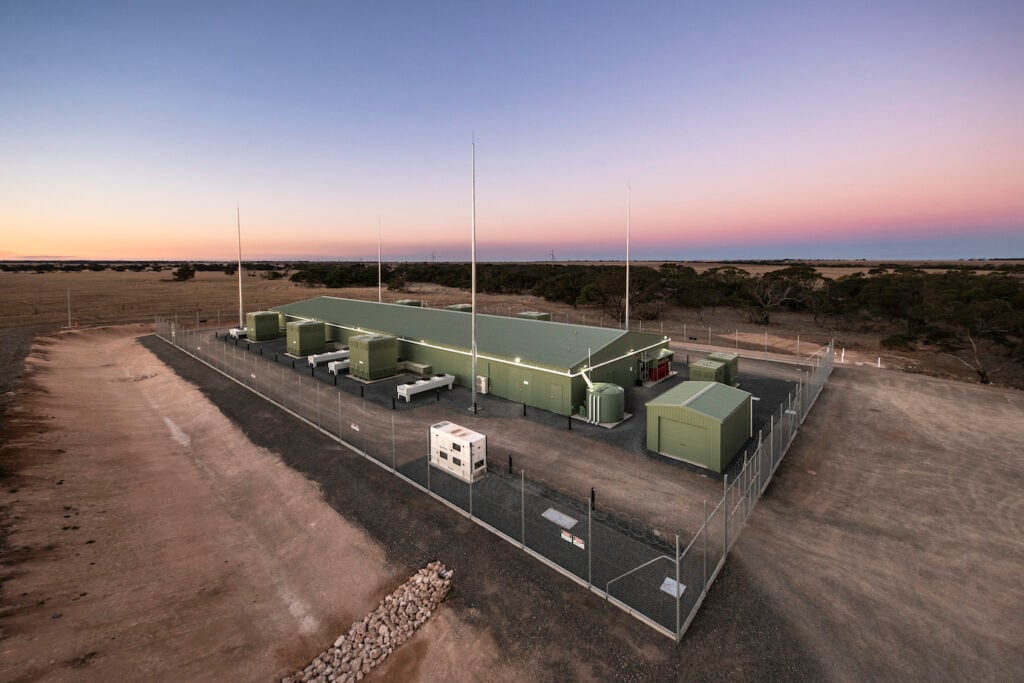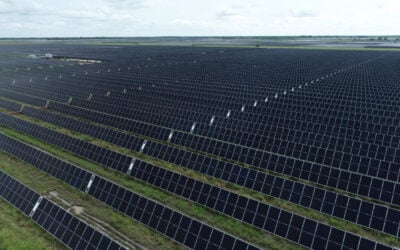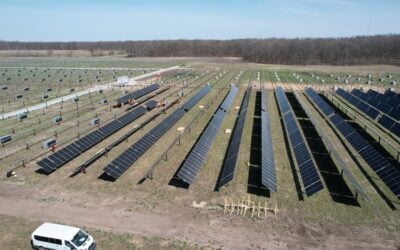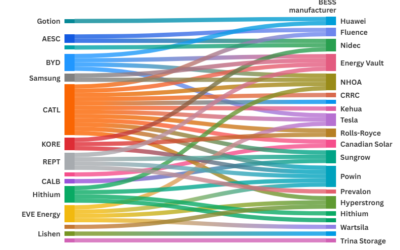
Hitachi Energy has launched improved and new versions of its PowerStore battery energy storage system (BESS) products, alongside other new and updated products and services in its Grid Edge Solutions portfolio.
It marks the first distributed energy solutions portfolio update for the company since it launched in October, having traded previously as Hitachi ABB Power Grids.
Enjoy 12 months of exclusive analysis
- Regular insight and analysis of the industry’s biggest developments
- In-depth interviews with the industry’s leading figures
- Annual digital subscription to the PV Tech Power journal
- Discounts on Solar Media’s portfolio of events, in-person and virtual
Hitachi Energy put in place ‘collaborative operations centres’ earlier this year, a network of facilities around the world that can be used to remotely automate power grids and grid interaction for utility and industrial customers.
The company’s portfolio of digital automation products and services, called e-mesh, is used to control, dispatch and optimise the use of distributed energy resources and includes the PowerStore BESS.
The entire energy market is transforming, and the challenges are expanding in scope and urgency. It is no longer about one transformation. It is about many changes happening at once, and is always built on more electrification,” Hitachi Energy’s head of Grid Edge Solutions Maxine Ghavi said.
Hitachi Energy told Energy-Storage.news today that the design concept of the PowerStore product has been upgraded to be integrated or modular, depending on customer needs. It comes with optimised interfaces to battery solutions with different lithium-ion sub-chemistries from two providers” lithium iron phosphate (LFP) batteries from CATL, and nickel manganese cobalt (NMC) batteries from Samsung.
It comes with “harmonised” grid code availability — enabling it to be operated flexibly in different markets and regions with different grid codes — as well as safety features, a company spokesperson said. Available from 50kW up to megawatt-scale configurations, the system is also designed to meet the needs of much larger-scale projects that the market is demanding and has enhanced cybersecurity features.
“Additionally, there is a growing need to manage a multitude of local grid connection requirements for BESS. We help our customers to comply with those requirements offering a full suite of dynamic simulation models. There are different impacts of renewable integration depending on local network strength,” the Hitachi Energy spokesperson said.
Also included in the e-mesh portfolio update are a new energy management system (EMS), added options for cloud-based monitoring and performance adjustment, and new options for MicroSCADA automation and RTU-based control. For the first time, e-mesh now includes technology ready for vehicle-to-grid (V2G) bi-directional electricity flows.
Hitachi Energy said the updates make e-mesh a good fit for the electric vehicle (EV) fleet charging market; the e-mesh suite enables the creation of microgrid-like infrastructure that will be needed to charge fleets of EVs, from integrated battery storage to managing and forecasting loads.
Principal engineer at customer Snohomish County Public Utility District (SnoPUD) Scott Gibson said that “with exceptional reliability,” battery energy storage “becomes the linchpin for our future infrastructure” as demand for renewable energy and V2G readiness increases.
“The right control and automation technologies are also needed to synchronise assets in order to maximise and optimise microgrid system performance. By working with Hitachi Energy, we are looking ahead to a future where we can pave a sustainable path, maximise renewable integration and address future energy needs,” Gibson said.
“We have heard from customers around the globe that they don’t just want a single product for a microgrid, energy storage, or a control system. They want a flexible and optimised solution for reducing complexity, providing the highest penetration of renewables, while increasing overall stability and reliability. This also means they will ultimately need more digital services for their own management, productivity, and growth,” Hitachi Energy’s Maxine Ghavi said.






